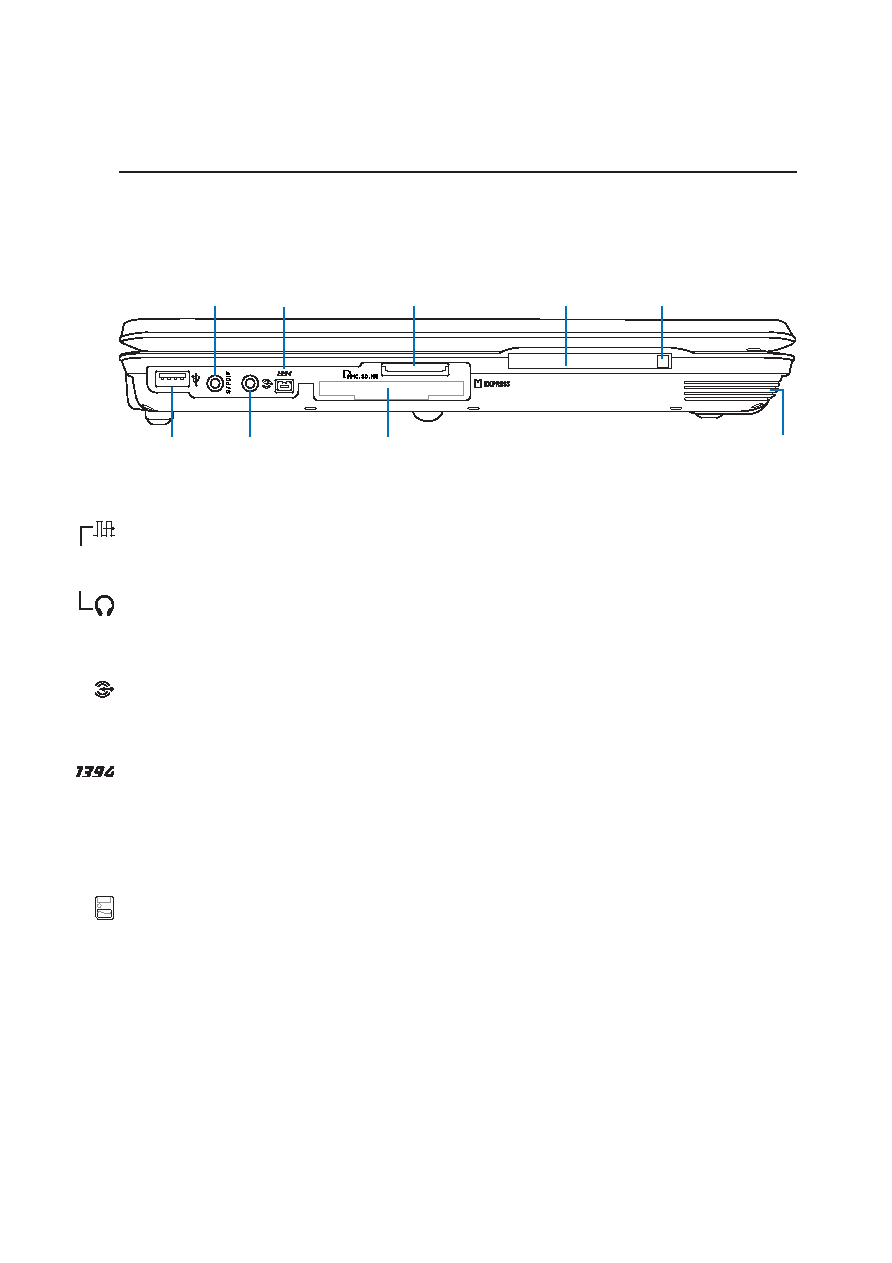
21
Knowing the Parts
2
Left Side
Refer to the diagram below to identify the components on this side of the Notebook PC.
1394 Port
IEEE1394 is a high speed serial bus like SCSI but has simple connections and hot-plugging capabilities
like USB. The interface IEEE1394 has a bandwidth of 100-400 Mbits/sec and can handle up to 63 units
on the same bus. IEEE1394 is also used in high-end digital equipment and should be marked “DV” for
Digital Video port.
Flash Memory Slot
Normally a PCMCIA or USB memory card reader must be purchased separately in order to use memory
cards from devices such as digital cameras, MP3 players, mobile phones, and PDAs. This Notebook PC
has a built-in memory card reader that can read many flash memory cards as specified later in this
manual. The built-in memory card reader is not only convenient, but also faster than most other forms
of memory card readers because it utilizes the high-bandwidth PCI bus. More information is provided
in section 4 of this manual.
Audio Input Jack
The stereo input jack (1/8 inch) can be used to connect a stereo audio source to the Notebook PC. This
feature is used mainly to add audio to multimedia applications.
SPDIF Output Jack (SPDIF Output)
This jack provides connection to SPDIF (Sony/Philips Digital Interface) compliant devices for digital
audio output. Use this feature to turn the Notebook PC into a hi-fi home entertainment system.
Headphone Output Jack (Phone Output)
The stereo headphone jack (1/8 inch) is used to connect the Notebook PC’s audio out signal to ampli-
fied speakers or headphones. Using this jack automatically disables the built-in speakers.
Combo
Flash Memory
Slot
PCI Express Slot
(Reserved for future use)
Audio
Speaker
SPDIF/Phone
Output
1394
Port
Audio
Input
PC Card
Eject
USB
Port
PC Card

